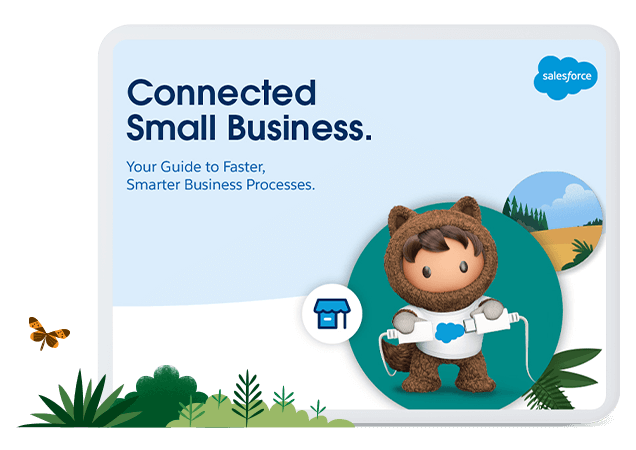Sales techniques have changed in the last few years, as today’s sales teams are focusing on empathy, understanding and collaboration – both with other teams and with their prospects. Pushy, fast-talking reps have been replaced by data-driven insights, transparency and meaningful communication, as buyers and sellers work together to chart a path towards success.
That’s not to say that tried-and-true sales techniques are no longer effective, but the objective has shifted. For most salespeople the goal is no longer just to close the deal; it’s to help the customer succeed.
Let’s take a look at some common building blocks for sales techniques, and then see how you can transform your sales techniques to deliver value, close the deal and create relationships for life.
Want to go for a SPIN? 5 common sales promotion techniques
To some degree, every salesperson has their own personal method of selling, crafted from experience and designed to leverage their personal strengths. But just because there are no magic, one-size-fits-all sales techniques doesn’t mean there aren’t some classic sales methods worth considering.
Here are 5 sales promotion techniques with proven results:
Akido selling: Akido selling revolves around anticipating a prospect’s objections in advance and being prepared for them. An important part of Akido selling is to avoid the ‘hard sell’, and instead guide the prospect towards realising the benefits of your product or service on their own. Put simply, Akido is based on educating, not selling.
SPIN selling: SPIN selling is based on asking high value questions in a specific order. SPIN is an acronym for Situation, Problem, Implication, Need Payoff. By asking the right questions in the right order, salespeople can help their prospects realise that they not only have a problem they might not have previously identified – but you can help fix it.
FOMO selling: An emotional sales technique, FOMO (Fear of Missing Out) selling is simply making the customer aware that there’s a cost to doing nothing. We’re risk-adverse creatures, so it’s easy to look at any new investment through a negative lens. But what’s the cost of missing out? In many cases, it can be considerably higher.
Consultative selling: Even if you’re practising a different technique, all selling should be consultative selling. Consultative selling is based around really looking at a customer’s goals – and whether you can help get them there. In consultative selling, it’s more important to establish trust and build long-term relationships that close a quick deal.
Conceptual selling: Conceptual selling could be considered a branch of consultative selling, in that it’s predicated on listening to the prospect rather than talking at them. Successful conceptual selling involves listening to a prospect’s concept of their business’s issues, at which point you can explain the concept of your product. The idea here is not to get into the core features or a long-winded sales pitch, but sell a solution.
7 tips for creating winning sales techniques
When crafting a sales pitch, you’ll want to have some flexibility to account for your prospect’s needs and objections. So don’t get so anchored to your pitch that you can’t adjust to new information, and always be read to pivot and capitalise on your opportunities.
Here are seven tips for winning sales techniques:
Understand the prospect’s POV. Know your prospect’s unique situation and put yourself in their shoes: why is their current status quo not good enough? What are their unconsidered needs? What’s their budget like, and how many decision-makers need to approve purchases? What’s the one thing you would want most from the salesperson sitting across from you? Once you understand what the buyer needs, you can craft your pitch around your ability to provide it.
Know your differentiator. It’s likely that you’re not the first salesperson approaching your prospect. What advantage do you hold over your competitors? And just as importantly, what edge can you provide your prospects over their competitors? What key insights can you deliver about the market? Again, this is about showing your value front and centre while telling a story that’s easy to understand. There’s bound to be some overlap between your competitors and yourself, so make sure your differentiator is on full display.
Be prepared to turn lemons into lemonade. If you’ve done your research into a company, you may be able to predict their specific objections and pre-empt them. And if you’re able to turn potential negatives into positives, that’s even better. For example, if you know that budget will likely be an issue, you can point out how much their current status quo is costing them. It’s possible that doing nothing is actually more expensive than your product or service, but status quo bias has resulted in your prospect not considering the hard costs of inaction.
Take a page from Hollywood. Humans are hard-wired to respond to story, and you’re not just selling a product or service, you’re selling a vision of success. Make sure to not only highlight the benefits of your product or service in your pitch, but how it could change the buyer’s story. Your prospect is on a hero’s journey, after all, and you’re just an ally offering them a tool to help them reach their happy ending. In your pitch, just make sure to avoid the second-act sag.
Be data-driven. Testimonials, market insights, analytical forecasts and proven results speak volumes, especially when customers are intrinsically worried about the ‘hard’ sell. Let your data back up your story, so that you can focus on being an advisor and an ally rather than a salesman. Having a data-backed pitch and a clear path to ROI will also make it easier for the buyers to get approval from other decision-makers.
Listen. It’s tempting to talk at your prospect – after all, you have a fantastic product to offer. But listening to what your potential customer actually needs is far more important than promoting your product. Not only does listening enable you to see how your product or service can best help the prospect; it can help you improve your sales techniques. For example, if your potential customers are all voicing the same objections or losing focus at the same point in your pitch, you can make adjustments as needed.
Trust in your tools. CRM platforms are a successful sales team’s not-so-secret weapon, as they offer relevant insights and data in easy-to-digest ways. And, when choosing KPIs (key performance indicators) to track, select metrics that can show you more than just sales figures. For instance, sales forecasting tools can help you track big-screen goals, but look beyond the bottom line and track things like customer satisfaction and employee satisfaction as well. After all, unengaged employees have a negative impact on productivity, so one of the best ways to increase sales is to increase employee satisfaction.
Ready to pitch?
Many of the sales techniques and strategies above overlap, in that they’re all focused on the same thing: connecting with the customer. By being an ally and an advisor, rather than just a provider of goods or services, you can build trust, create relationships and close more deals, one happy client at a time.
To see more about how to create winning sales techniques, download our free How to Sell eBook. And for more tools and tips on selling better in the new climate, check out our resources for sales professionals.








